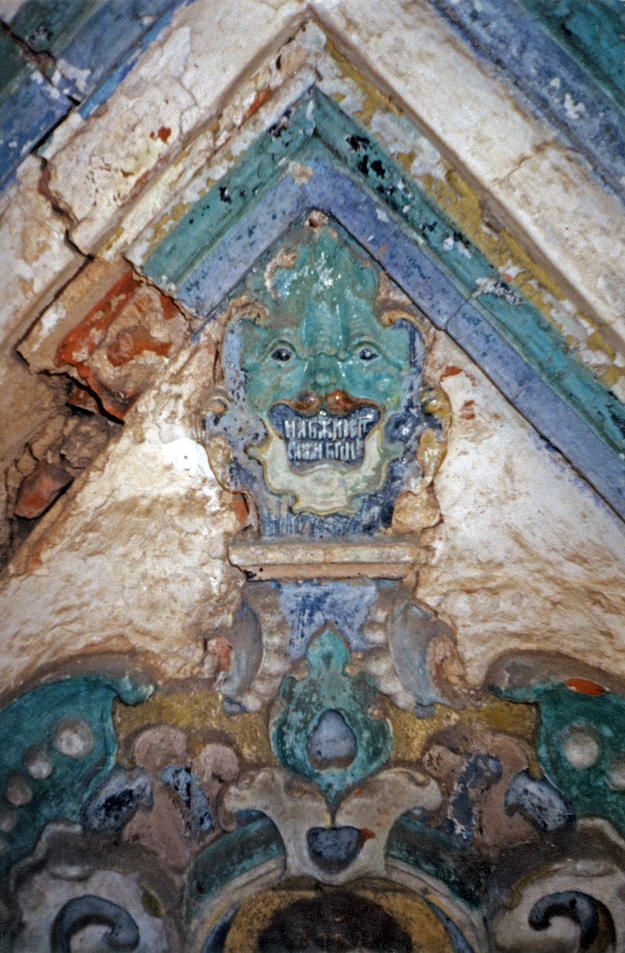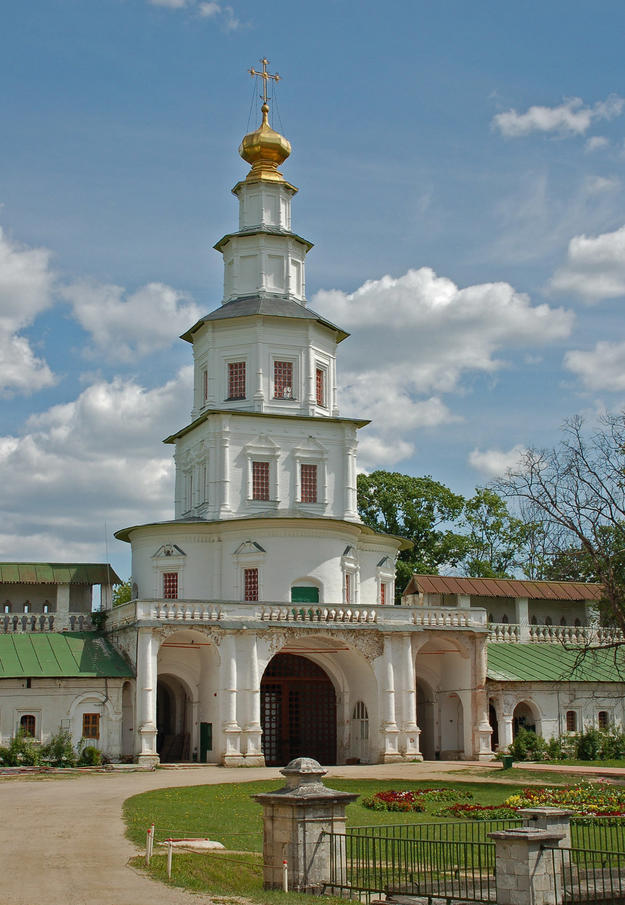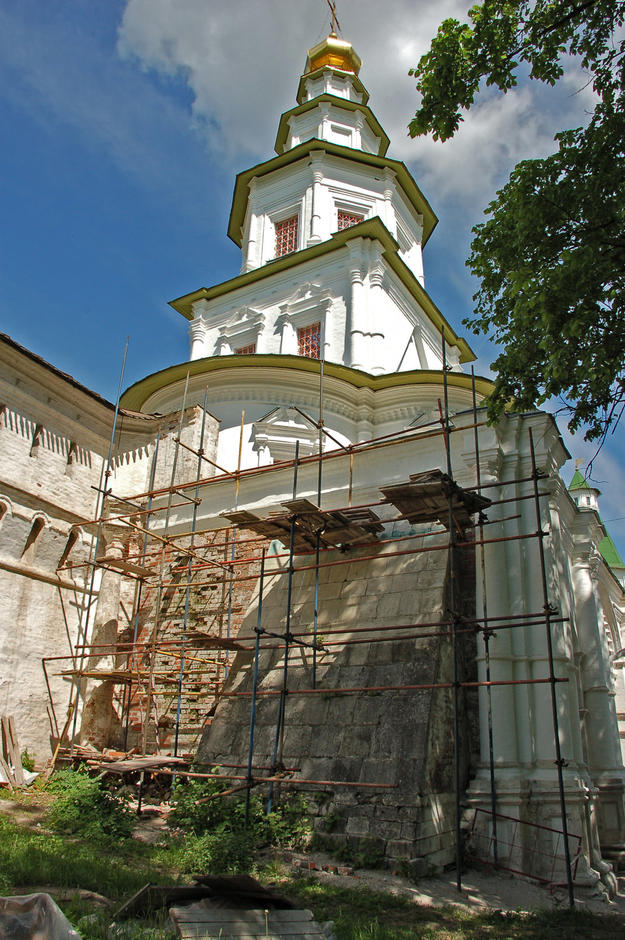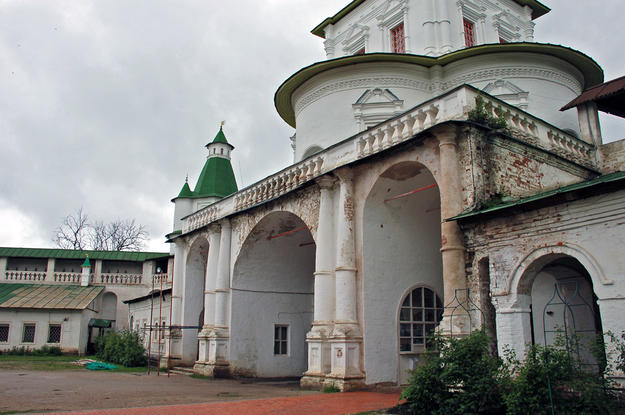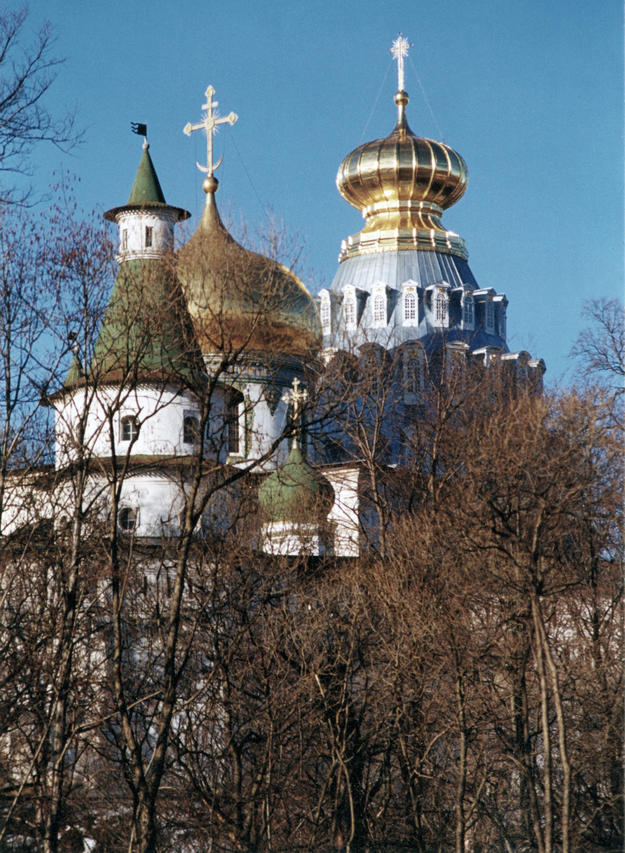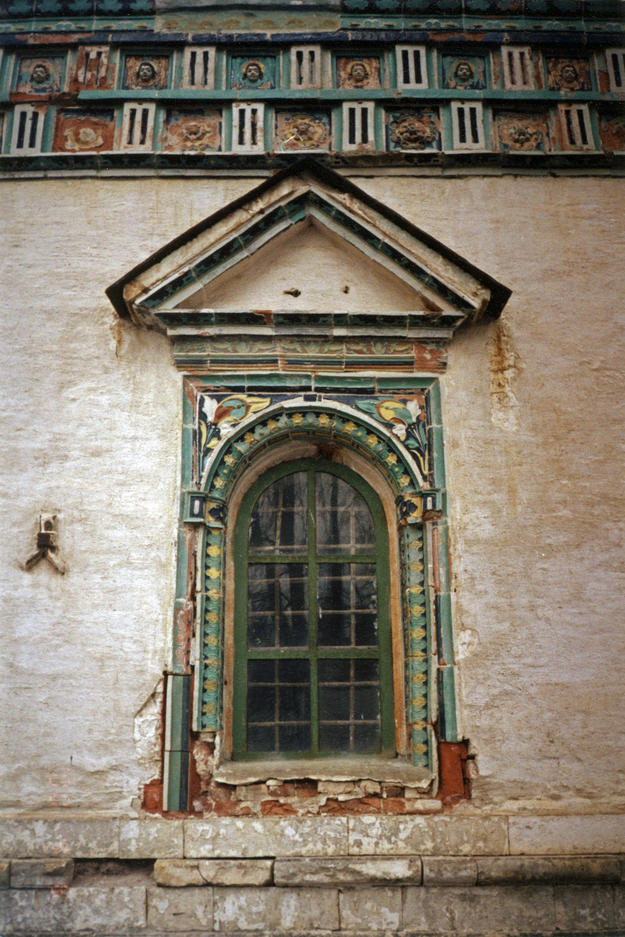New Jerusalem Monastery
Founded under Patriarch Nikon in the 17th century in Istra on the outskirts of Moscow, the New Jerusalem Monastery was meant to evoke the Holy Land and serve as a pilgrimage site. Two buildings, the Church of the Tomb of the Holy Savior and the Cathedral of the Resurrection, form the nucleus of the monastery. Inside the two churches, the icon, decoration, and inscriptions represent the most important group of polychrome ceramic work ever produced in Russia. Built between 1658 and 1698, New Jerusalem is an extraordinary example of Russian ecclesiastical architecture. By the mid-18th century, the dome of the Cathedral of the Resurrection had failed and it was restored in the Baroque style in 1748. In the early 19th century, a neoclassical side chapel of Mary Magdalene was added. Bombing by Nazi occupying forces in 1941 destroyed the great dome of the Cathedral of the Resurrection; it was partially reconstructed in the 1980s. Sporadic restoration and maintenance followed, but came to a halt in the 1990s. Today, the architecture of New Jerusalem Monastery suffers from a variety of conservation issues including water damage from poor drainage.
2002 World Monuments Watch
After WMF listed New Jerusalem on the 2002 Watch, we funded a preliminary assessment of the site and a master planning workshop, coordinated by the Holy Archangels Foundation. They successfully united key stakeholders, including the Russian Ministry of Culture. Based on recommendations that came out of the assessment and workshop, the foundation proposes to complete a conservation master plan for the site and implement a series of priority interventions including stabilization and conservation of the bell tower, rotunda, and sepulcher.
New Jerusalem Monastery is a large site with a range of conservation problems. The development of a sustainable preservation strategy is dependent upon long-term private and public-sector support. Since the 2002 Watch listing, the Holy Archangels Foundation has made considerable progress in garnering attention for the plight of this internationally significant yet overlooked monument. WMF’s participation in this project will help sustain the current momentum and will be used to secure additional government and private funds needed to preserve the site long-term.

